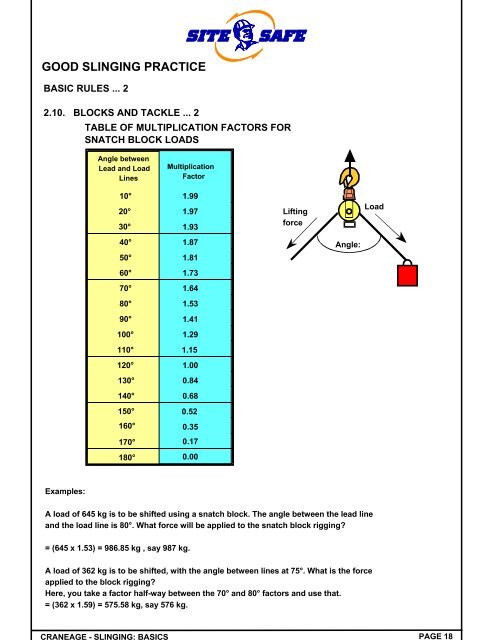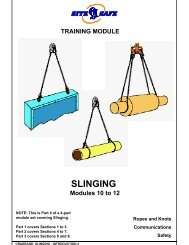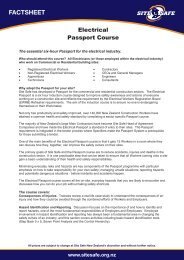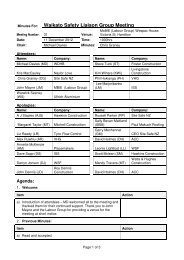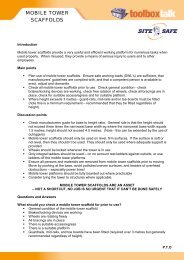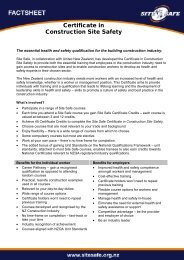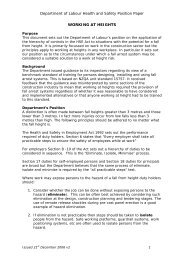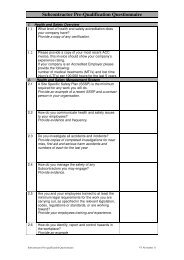Create successful ePaper yourself
Turn your PDF publications into a flip-book with our unique Google optimized e-Paper software.
CRANEAGE - SLINGING: BASICS PAGE 18<br />
GOOD SLINGING PRACTICE<br />
BASIC RULES ... 2<br />
2.10. BLOCKS AND TACKLE ... 2<br />
TABLE OF MULTIPLICATION FACTORS FOR<br />
SNATCH BLOCK LOADS<br />
Angle between<br />
Lead and Load<br />
Lines<br />
Multiplication<br />
Factor<br />
10°<br />
20°<br />
30°<br />
1.99<br />
1.97<br />
1.93<br />
Lifting<br />
force<br />
Load<br />
40°<br />
1.87<br />
Angle:<br />
50°<br />
1.81<br />
60°<br />
1.73<br />
70°<br />
1.64<br />
80°<br />
1.53<br />
90°<br />
1.41<br />
100°<br />
1.29<br />
110°<br />
1.15<br />
120°<br />
1.00<br />
130°<br />
0.84<br />
140°<br />
0.68<br />
150°<br />
0.52<br />
160°<br />
0.35<br />
170°<br />
0.17<br />
180°<br />
0.00<br />
Examples:<br />
A load of 645 kg is to be shifted using a snatch block. The angle between the lead line<br />
and the load line is 80°. What force will be applied to the snatch block rigging?<br />
= (645 x 1.53) = 986.85 kg , say 987 kg.<br />
A load of 362 kg is to be shifted, with the angle between lines at 75°. What is the force<br />
applied to the block rigging?<br />
Here, you take a factor half-way between the 70° and 80° factors and use that.<br />
= (362 x 1.59) = 575.58 kg, say 576 kg.


